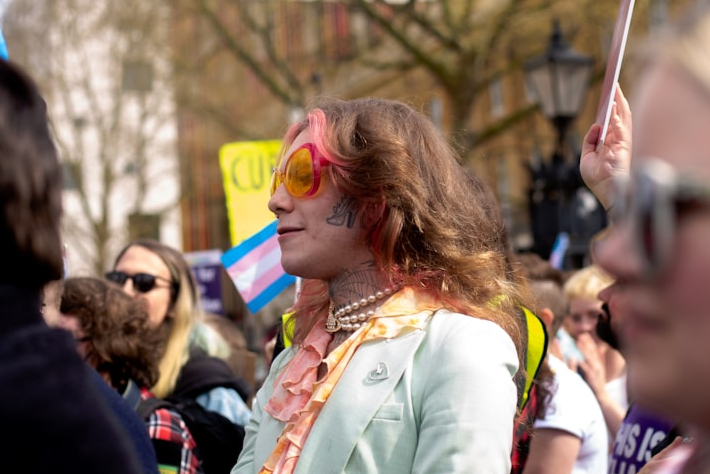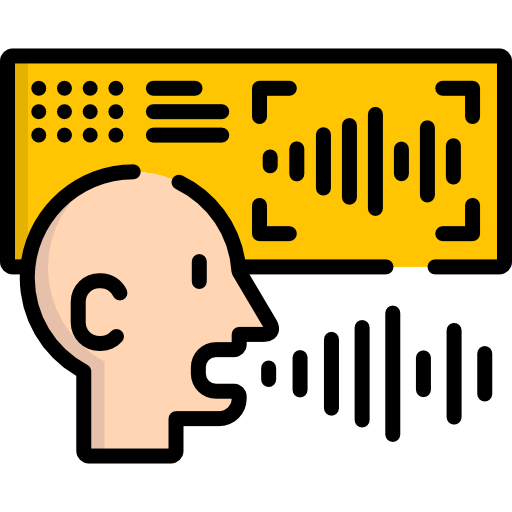
This logo isn't an ad or affiliate link. It's an organization that shares in our mission, and empowered the authors to share their insights in Byte form.
Rumie vets Bytes for compliance with our
Standards.
The organization is responsible for the completeness and reliability of the content.
Learn more
about how Rumie works with partners.
Have you ever been on a sports team...
...that didn’t have a coach?

Some teams are self-governing, but having a coach can help you score more goals!

But what does this have to do with transgender people?
Vocal coaching — or voice therapy — for transgender people can help them achieve speaking goals.

When someone’s voice doesn’t fit with their gender identity, they may have a lower quality of life — and face unwanted attention or even threats to their safety.
With gender-affirming voice therapy, trans people can align the way they communicate with the way they want to be understood.
What is voice therapy for transgender people?

Voice therapy is just one of many social, medical, and practical steps along a gender transition journey. It involves working over time with a professional provider on several areas of communication.
On its own, voice therapy for transgender people does not include medication, hormone treatment, or surgery, though these may be other parts of their transition plan.
Who provides voice therapy?

Certified speech-language pathologists
Voice performance specialists with a theater or singing background
Voice therapists have extensive training in supporting the physical production of the voice. They guide changes that are sustainable in the long term and won’t damage someone's voice.
Voice therapy can take place in person or virtually. It may be offered by an independent office or a larger clinic for speech-language or trans care.
So why do trans people seek voice therapy?
Below are four specific reasons.
Did you know?
Not everyone who seeks trans voice therapy identifies as strictly male or strictly female! They may identify as non-binary or some of the identities under that term, such as gender-diverse or agender.
Reason #1: Fit with gender identity
Have you ever noticed that women tend to speak at a higher pitch, and men at a lower pitch?
 If someone is transitioning, their speaking pitch may not fit with their gender presentation.
If someone is transitioning, their speaking pitch may not fit with their gender presentation.
 Photo by Uday Mittal on Unsplash
Photo by Uday Mittal on UnsplashMany trans people experience gender dysphoria, which is “a sense of unease regarding the mismatch between assigned gender and gender identity.” Gender dysphoria can include feelings of anxiety, depression, shame, and being misunderstood or incomplete.
By changing pitch, resonance, and other communication characteristics, voice therapy can help trans people adjust their speaking characteristics to affirm their gender and alleviate gender dysphoria.
Example
In the video below, voice therapist Claire Michelle introduces a clip of her client, Kris Tyson.

Kris went through voice therapy to make her speaking fit with all the other parts of her gender identity.
Reason #2: Safety
It is not the fault of trans people that others want to hurt them. No one should have to change their outward expression to stay safe.

Still, voice therapy for transgender people can be like safety equipment. It can help them "pass"—fit with others’ ideas of normal gender expression—which allows them safer experiences in many arenas, such as jobs, housing, and entertainment.
Examples

River (they/them) identifies as gender fluid or non-binary but is often perceived as a man. They're seeking voice therapy to help them blend in with men when visiting different cities, as they often do for work. They want to be trusted and not seen as an outsider.

Rachel (she/her) is a trans woman. She initially had a deep voice and has been working with a voice therapist to help her achieve a higher pitch, along with several other more traditionally feminine speaking characteristics. She wants her trans status to stand out less so that she can feel safe in public, everywhere from grocery stores to dance clubs.
Reason #3: Complement to surgery or hormone therapy
Voice therapy retrains muscles, especially in the neck, face, and abdomen.

Many people find voice therapy less invasive than hormone treatment or surgery, so someone may seek voice therapy by itself. Gender-affirming care often includes voice therapy with other interventions, depending on how they affect the voice.
Examples
 Photo by Eye for Ebony on Unsplash
Photo by Eye for Ebony on UnsplashTina (she/her) is a trans woman. She recently had voice feminization surgery, which raised the pitch of her voice, but now she is undergoing voice therapy to help her find rhythms and expression patterns that fit her gender identity.
 Photo by Shane on Unsplash
Photo by Shane on UnsplashAugust (he/they) is a trans man. His doctor has told him that masculinizing hormone treatment will probably lower his voice pitch, but his current health insurance doesn’t cover this treatment. Until he can get hormone treatment, he is seeking voice therapy to change his communication sounds and patterns to fit his identity.
Reason #4: Taking care of the voice
Voice therapy for transgender people is a specialized field, and everyone's voice is different.

Although someone can change their voice on their own, voice therapists tailor their work to each person's goals and starting point. Like good sports coaches, they provide appropriate exercises, practice schedules, and feedback so that someone can safely train their body.
Every person has their own gender expression and identity, as well as their own local and personal circumstances, so trans care plans must be individualized.
Example
Watch Sienna (she/her) in session with voice therapist Anna in the video below:
Quiz: Zander's Transition
 Photo by Andre Hunter on Unsplash
Photo by Andre Hunter on UnsplashZander (he/him) has been dealing with gender dysphoria since he was about 10 years old. He is now 25. About a year ago, he started using his new name, he/him pronouns, and different clothes, and he’s looking at voice therapy for the next step in his transition.

What can he expect from voice therapy?
A. Working with a throat surgeon
B. Practicing facial expressions
C. Speaking sentences and dialogues
D. Continuing appointments for many years
Quiz
Select all that apply.
Practicing facial expressions is a common feature of voice therapy for trans folks. Reducing gender dysphoria is often a goal of trans voice therapy, and very often, this goal is achieved! Transgender vocal treatments may include surgery, but voice therapy is typically provided by speech-language pathologists or vocal performance specialists. It usually takes a series of sessions and additional practice to achieve full, lasting results, but unlike hormone therapy, voice therapy doesn't involve lifelong treatment.
Take Action
Keep learning, and keep looking at trans perspectives!

This Byte has been authored by
Elisabeth Lorenc
Instructional Designer
M.S.

